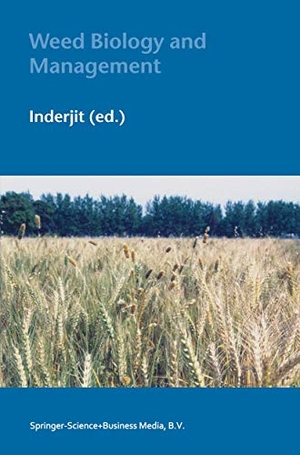Für statistische Zwecke und um bestmögliche Funktionalität zu bieten, speichert diese Website Cookies auf Ihrem Gerät. Das Speichern von Cookies kann in den Browser-Einstellungen deaktiviert werden. Wenn Sie die Website weiter nutzen, stimmen Sie der Verwendung von Cookies zu.
Cookie akzeptieren
Weed Biology and Management
- Springer Netherlands
- 2010
- Taschenbuch
- 568 Seiten
- ISBN 9789048164936
Weeds hold an enigmatic and sometimes-controversial place in agriculture, where they are generally reviled, grudgingly tolerated, and occasionally admired. In most cases, growers make considerable effort to reduce the negative economic impact of weeds because they compete with crops for resources and hinder field operations, thereby affecting crop productivity and quality, and ultimately the sustainability of agriculture. Weed control in production agriculture is commonly achieved through the integration of chemical, biological, and mechanical management methods. Chemicals (herbicides) usually inhibit the growth and establishment of weed plants by interfering with various physiological and biochemical pathways. Biological methods include crop competition, smother crops, rotation crops, and allelopathy, as
Mehr
Weniger
zzgl. Versand
in Kürze